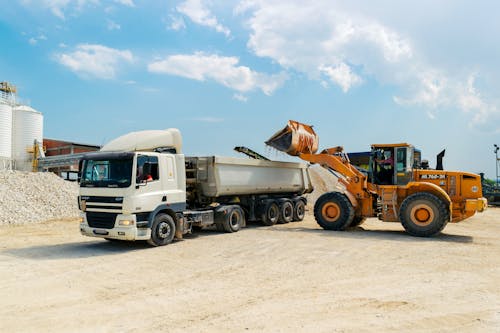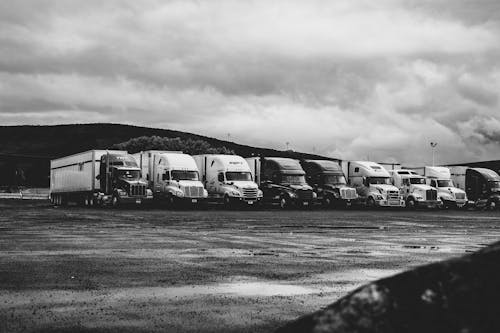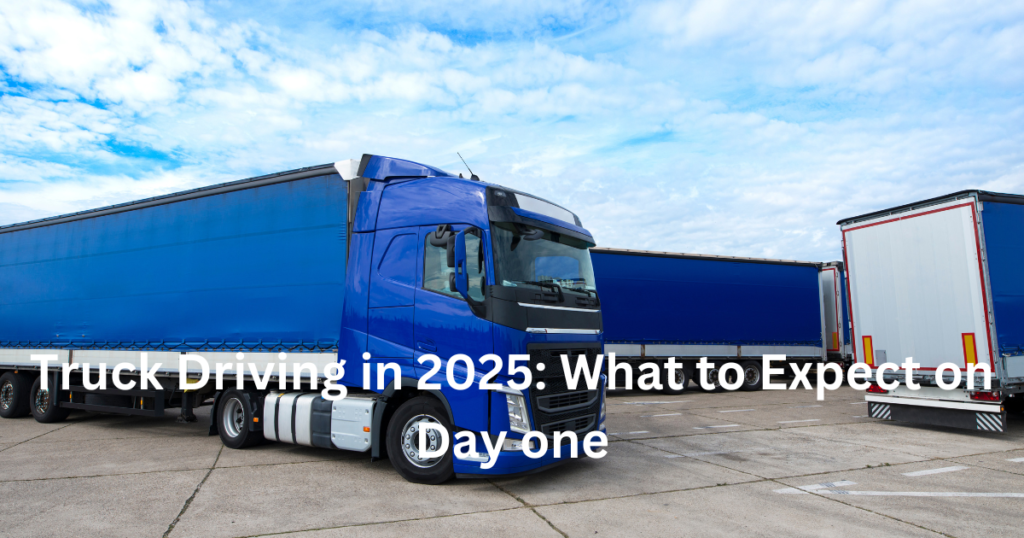Before stepping into a truck, you’ll go through an onboarding process designed to familiarize you with company policies, compliance requirements, and operational tools.
Employment Verification and Documentation

- Commercial Driver’s License (CDL) Validation – You must present a valid CDL that meets federal and state requirements.
- Medical Examination Certificate – Ensures fitness to operate a commercial vehicle.
- Electronic Logging Device (ELD) Registration – Tracks driving hours and compliance with Hours of Service (HOS) rules.
- Company Fleet System Access – Drivers receive login credentials for dispatch communication and route management.
Training on Digital Systems
- Monitors fuel efficiency, route optimization, and safety alerts.
- Dispatchers track location, speed, and vehicle diagnostics.
- Covers Federal Motor Carrier Safety Administration (FMCSA) regulations, load security, and emergency protocols.
Pre-Trip Preparation: Ensuring Safety and Efficiency
A truck driver’s first and most important responsibility is to conduct a comprehensive vehicle inspection. You need to check different components to guarantee the truck is operating well. Examining the engine, monitoring the oil level, and checking tire pressure are necessary. Inspecting the truck’s lights, signals, braking system, and other safety elements is also essential.
A driver’s first responsibility is to conduct a thorough inspection of the truck to prevent issues on the road.

Vehicle Inspection Checklist
- Brake System Check – Ensures proper stopping power.
- Tire Pressure and Tread Inspection – Prevents blowouts and improves fuel efficiency.
- Fluid Levels (Oil, Coolant, Washer Fluid) – Avoids mechanical failures.
- Lighting and Electrical Systems – Verifies operational turn signals, headlights, and brake lights.
- Cargo Security Verification – Ensures proper weight distribution and load stability.
Understanding Advanced Truck Features
Many trucks in 2025 come equipped with smart technology, including:
- Alerts drivers when unintentionally drifting out of lanes.
- Adjusts speed based on traffic conditions.
- Automatically applies brakes to prevent accidents.
- Detects fatigue and distractions to enhance safety.
Loading, Route Planning, and Weather Assessment
Proper load handling and route assessment are essential for smooth operations.
Freight Handling and Security
- RFID-Based Check-In – Automates warehouse entry and exit.
- Electronic Bill of Lading (eBOL) – Digitizes documentation for faster processing.
- Load Weight Sensors – Ensures compliance with legal weight limits.
Route Optimization and Traffic Management
- GPS-Based AI Navigation – Recommends the fastest and safest routes.
- Helps avoid congestion and road closures.
- Warns drivers about storms, ice, and hazardous conditions.
First Driving Assignment: Navigating the Road

Once the pre-trip procedures are completed, your first driving experience begins.
Key Challenges on the Road
- New drivers must adapt to different traffic patterns.
- Proper rest management is crucial for safety.
- Construction zones, accidents, and detours require flexibility.
Compliance and Safety Standards
- Hours of Service (HOS) Limits – ELDs track driving hours to prevent fatigue.
- Weigh Station Checkpoints – Ensures trucks meet weight and safety regulations.
- Speed Limit Regulations – Maintaining legal speeds reduces accident risks and fuel consumption.
Post-Trip Responsibilities: Closing the Day

After completing your route, post-trip tasks ensure the truck is ready for its next journey.
Vehicle Inspection and Maintenance Reporting
- Brake and Tire Inspection – Identifies wear and tear.
- Fuel and Battery Monitoring – Ensures readiness for the next trip.
- Logging Maintenance Needs – Reports mechanical issues to fleet managers.
Unloading and Documentation
- Secure Docking Procedures – Ensures safe unloading of cargo.
- Digital Proof of Delivery – Confirms freight arrival.
- Drop-and-Hook Operations – Involves swapping trailers for the next assignment.
Performance Review and Supervisor Feedback
- Telematics Data Analysis – Reviews fuel efficiency and driving habits.
- Safety Performance Metrics – Evaluates compliance with driving standards.
- Route Efficiency Review – Identifies potential areas for improvement.
Industry Trends Affecting New Truck Drivers

Several factors will shape trucking careers in 2025.
Technology Advancements
- Electric and Hybrid Truck Adoption – Growing due to lower emissions and fuel savings.
- AI-Assisted Driving Features – Enhances road safety and efficiency.
- Automated Freight Terminals – Reduces loading and unloading times.
Economic and Market Changes
- Tariff and Trade Policies – Impact cross-border freight demand.
- Driver Pay Adjustments – Increased wages due to driver shortages.
- Industry Consolidation – Large companies acquiring smaller fleets..
FAQ
What should I expect on my first day as a truck driver in 2025?
You will go through orientation, safety training, vehicle inspections, route planning, and your first driving assignment.
What new technologies will I use as a truck driver in 2025?
Truck drivers will use AI-powered fleet management systems, telematics, GPS-based navigation, and collision avoidance technology.
How do I ensure my truck is road-ready before driving?
Perform a pre-trip inspection, checking brakes, tire pressure, fluid levels, lighting systems, and cargo security.
How do truck drivers handle long-haul fatigue?
By following Hours of Service (HOS) rules, taking mandatory rest breaks, and using fatigue detection systems.
What trends are shaping the trucking industry in 2025?
Key trends include electric truck adoption, AI-assisted driving, automated freight terminals, and higher driver wages due to shortages.
James Johnson is a former truck driver who now works as a writer, specializing in the trucking industry. With over 15 years of experience on the road, James has a unique perspective on the challenges and opportunities faced by truck drivers and the trucking industry as a whole. His writing focuses on issues such as safety, regulation, and the latest industry trends. His work has been featured in several trucking publications and he has received recognition for his contributions to the industry. In his free time, James still enjoys being around trucks and often attends truck shows and other industry events.


